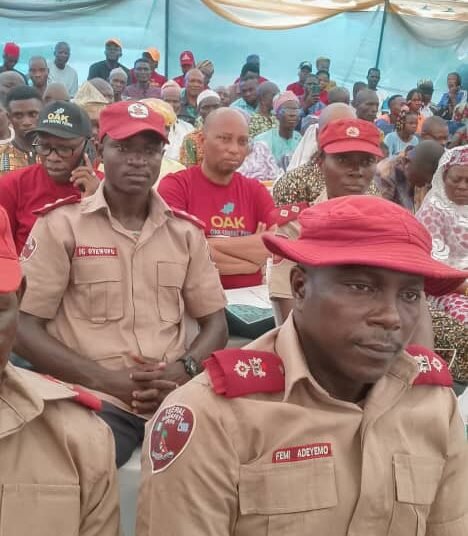A dive into a result-oriented approach on road safety — involving a practical and people-centric look, at the immediate causes of crashes; with a strong emphasis on the role of drivers, vehicle maintenance mechanism, and the effectiveness of law enforcement agencies along Oyo – Ogbomoso road.
The Oyo – Ogbomoso road; a vital artery connecting the major parts of Nigeria’s South-West and the North has tragically become a byword for fatal accidents. The relentless string of road traffic crashes (RTCs) along this corridor highlights a critical three-pronged crisis — driver’s error, the presence of faulty/unroadworthy vehicles, and a seemingly losing battle in the war on road safety.
Going forward, it is imperative to examine the below factors which undermines general safety on the road, coupled with the remedies to the aforementioned triad of Danger.
The triad of Danger
Driver’s Error and Impunity: The primary and most frequently cited cause of these crashes is human behavior. Drivers, particularly those operating commercial vehicles, often exhibits a brazen disregard for traffic laws. This includes —
Reckless Overtaking (Maneuvering into opposing traffic lanes on a single carriageway without adequate visibility).
The Fatigue Factor: Investigating the culture of long-haul driving, the lack of resting points, such as trailer parks along Oyo – Ogbomoso route, and the role of driver’s fatigue in head-on collisions (are very common along the route).
The Tyres and the Tears: A focus on vehicular roadworthiness, especially tyre blowouts, brake failure in heavy vehicles, the mechanics of overloaded trucks and misloading (Human and Goods) needs to be looked into.
Excessive Speeding: Pushing vehicles beyond safe limits, especially on poorly maintained or unlit sections of the road.
Route Violation (‘One-Way’): Deliberately driving against the flow of traffic, a desperate and deadly shortcut that results into a devastating head-on collision.
The Menace of Faulty Vehicles: While driver’s recklessness is often the trigger, the condition of the vehicles involved, frequently escalates a minor incident into a catastrophe. Nigeria’s roads are often plied by vehicles that are poorly maintained or dangerously old.
Mechanical Failure: Crashes are often compounded with issues like tyre burst, brake failure, and faulty lightning systems — which could be critical on high-speed roads.
Overloading: Trucks and commercial buses often carry loads far exceeding their capacities — straining mechanical parts and making the vehicles difficult to control, particularly in emergency braking situations.
The Unending War on Road Safety: Despite the efforts of agencies like the Federal Road Safety Corps (FRSC), the Oyo – Ogbomoso road seems to continually defy comprehensive safety control.
Post – Crash Response: A critical look at the emergency medical services (EMS) response time, the role of local residents/passersby in rescue efforts, and the lack of trauma centres along the highway necessitates a proactive approach. Government should look into the provision of standard hospitals or medical help areas, in order to effectively utilize the ‘Golden Hour theorem for crashed victims.
The Enforcement Reality: An assessment of the efficacy of road safety patrols, speed checks, public enlightenment/education campaigns, and stakeholders engagements — specifically targeting the drivers that plies Oyo – Ogbomoso route needs to be on the increase.
Changing the Mindset: Transport union members and private motorists on defensive driving tactics are required to surviving a poorly-maintained high-volume highway.
Infrastructural Deficiencies: While new projects are ongoing, sections of the expressway are often in poor structural conditions — featuring potholes, lack of adequate road signs/markings, and barriers (rocks placed as barricades along the route by a construction company requires strategic repositioning).
‘Safety continually remains a shared responsibility’
About the Author
Femi Adeyemo pjsc, MDMSS is a former and pioneer Unit Commander of FRSC RS11.312 Oolo Unit Command, along Oyo – Ogbomoso road. His insights draws from his years of experience in the field of Operations before his redeployment to RS2.1 Lagos as the Transport Standardization Officer — with a statutory responsibility of adding value to fleet management in Lagos State.












